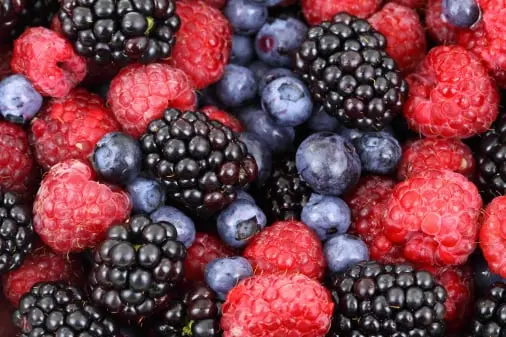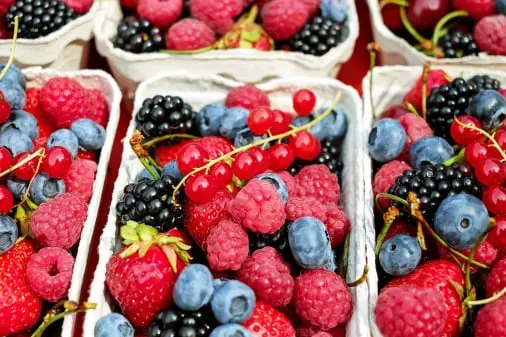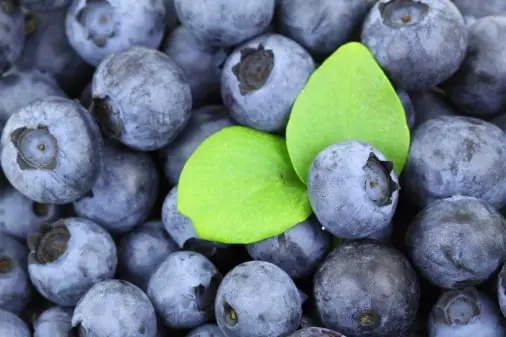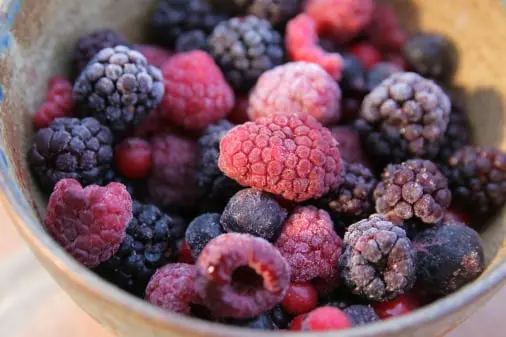Berry quality control inspection app for all berries: manage berry quality, capture photos, supplier berries quality feedback
Berry quality control inspection app for all berries: manage berry quality, capture photos, supplier berries quality feedback. Reduce quality inspection costs. Eliminate waste, price negotiations, and QC mistakes. Maximize quality consistency.

Berry Quality inspections during production
View App Specifications.
Improving the stability of high-quality traits of berry in different environments and cultivation systems for the benefit of European farmers and consumers
The GoodBerry research project focuses on the improvement of strategically important berry fruit crops, namely strawberry, raspberry, and blackcurrant. The project is based on a multi-tiered strategy interlinking research areas from molecular studies to cultivation techniques. identifying berry germplasm exhibiting an advantageous balance of production vs nutritional quality throughout the EU developing innovative production systems/ modern breeding strategies to maintain high yield in a range of European-wide environments and standardized and reliable analytical tools to evaluate berry production and fruit quality ensuring the uptake of the high quality production systems by EU growers to boost the completeness of the European berry production.

Daily Berry packhouse hygiene checklist
BERRY / BLUEBERRY FRUIT QUALITY MANAGEMENT
Diversity in Metabolites and Fruit Quality Traits in Blueberry Enables Ploidy and Species Differentiation and Establishes a Strategy for Future Genetic Studies.
Blueberry is well recognized as a rich source of health promoting phytochemicals such as flavonoids and phenolic acids. Multiple studies in blueberry and other crops indicated that flavonoids and phenolic acids function as bioactive compounds in the human body promoting multiple health effects. Despite their importance, information is limited about the levels of variation in bioactive compounds within and between ploidy level and species, and their association with fruit quality traits. Such information is crucial to define a strategy to study the genetic mechanisms controlling these traits and to select for these traits in blueberry breeding programs. Here we evaluated 33 health related phytochemicals belonging to four major groups of flavonoids and phenolic acids across 128 blueberry accessions over two years together with fruit quality traits, including fruit weight, titratable acidity, total soluble acids and pH.

Berry Quality control & management
Here we evaluated 33 health related phytochemicals belonging to four major groups of flavonoids and phenolic acids across 128 blueberry accessions over two years together with fruit quality traits, including fruit weight, titratable acidity, total soluble acids and pH. Highly significant variation between accessions, years, and accession by year interaction were identified for most of the traits. Cluster analysis grouped phytochemicals by their functional structure (e.g., anthocyanins, flavanols, flavonols, and phenolic acids). Multivariate analysis of the traits resulted in separation of diploid, tetraploid and hexaploid accessions. Broad sense heritability of the traits estimated in 100 tetraploid accessions, ranged from 20 to 90%, with most traits revealing moderate to high broad sense heritability (H2 > 40%), suggesting that strong genetic factors control these traits. Fruit size can be estimated as a proxy of fruit weight or volume and vice versa, and it was negatively correlated with content of most of phytochemicals evaluated here. However, size-independent variation for anthocyanin content and profile (e.g., acylated vs. non-acylated anthocyanin) exists in the tetraploid accessions and can be explored to identify other factors such as genes related to the biosynthetic pathway that control this trait.

Berry Supplier quality inspection & management
Blueberry belongs to the Ericaceae family and the genus Vaccinium section Cyanococcus. Three blueberry species, that include the highbush blueberry (HB), V. corymbosum L., rabbiteye blueberry (RB), V. ashei Reade (syn. Vaccinium virgatum Ait) and native stands of lowbush blueberry (LB), V. angustifolium Ait, are commercially grown in the United States (Kalt et al., 2001; Lyrene et al., 2003; Hancock et al., 2008; Retamales and Hancock, 2018). Among these species, the HB blueberry is widely grown in the US, accounting for ∼95% of total blueberry production (Kalt et al., 2001; Wang et al., 2019). The HB cultivars are further classified into northern highbush (NHB) and southern highbush (SHB) blueberries based on chilling requirement and winter hardiness (Lyrene et al., 2003; Hancock et al., 2008; Retamales and Hancock, 2018).